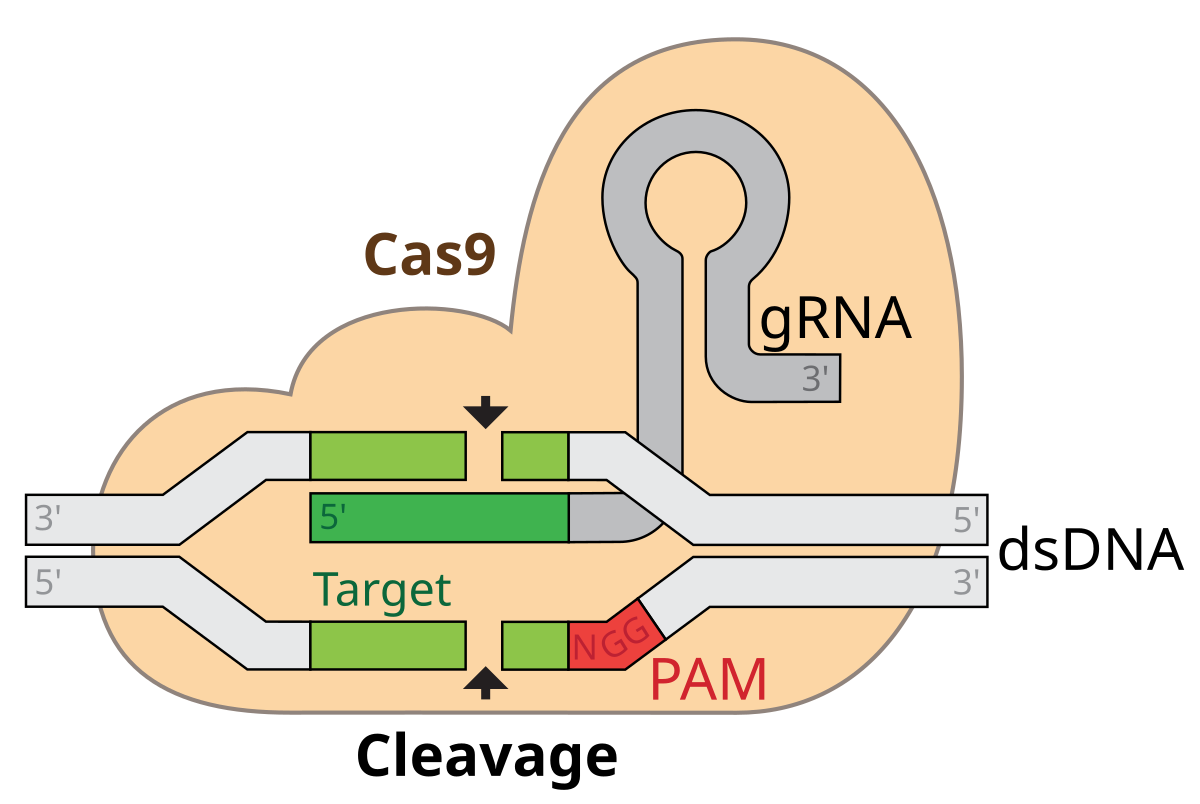Biochem 285 Week 8
1/13
Earn XP
Name | Mastery | Learn | Test | Matching | Spaced |
|---|
No study sessions yet.
14 Terms
What is CRISPR?
It is a method of genetic modification that targets a specific DNA sequence and creates a double stranded DNA break, which is repaired by NHEJ or HDR. IT is a defense system based on genetic memory.

CRISPR locus
A region of the bacterial genome where the CRISPR machinery is found. It contains short palindromic repeats that can base pair and form a cruciform structure.

Spacers
CRISPR is separated by these unique DNA sequences. These sequences match that of old viral DNA and is a history of previous attacks on this cell.
Cas1 and Cas2
CRISPR associated proteins responsible for inserting spacers into the CRISPR array. They cut invading DNA chunks by recognizing the PAM sequence however, the PAM sequence is not inserted into the CRISPR locus. The spacer sequence is inserted into the genome and the 3’ OH end is used to extend the repeat sequence. This is done before Cas9 is involved.
Cas9
A protein that creates double-strand breaks in DNA (dsDNA) by using gRNA (crRNA + tracrRNA) to locate specific target sequences adjacent to PAM sequences. Once bound to PAM, it unwinds the upstream DNA helix. Then if the spacer region is complementary to the target DNA (protospacer), it’ll make a dsDNA break which disables the invading virus. It has nuclease and helicase activity.
To use CRISPR to edit a genome, which of the following
need to natively exist in your target organism?
HDR or NHEJ pathway